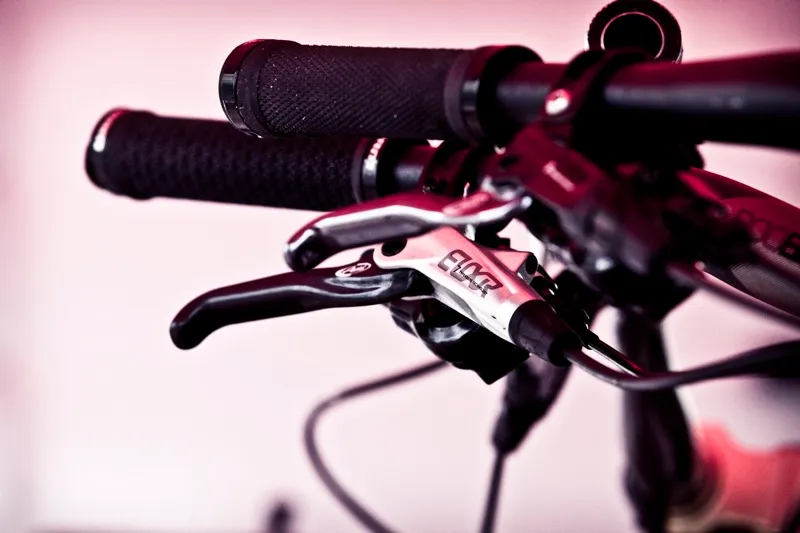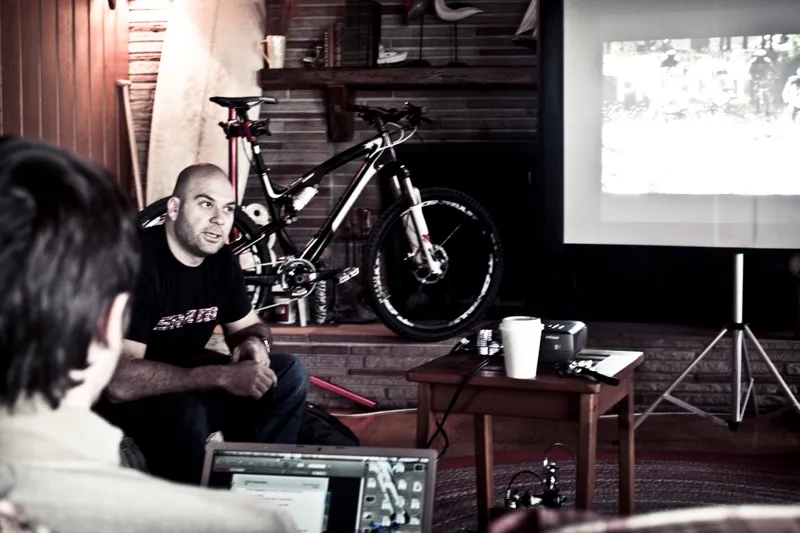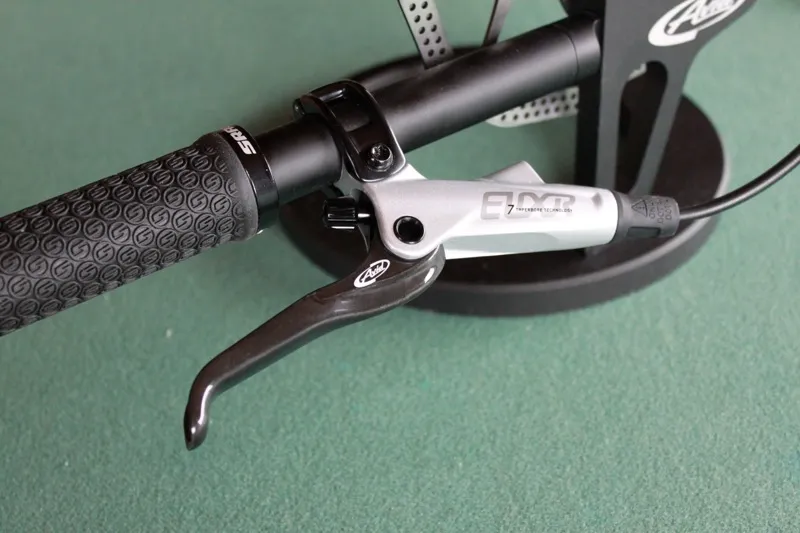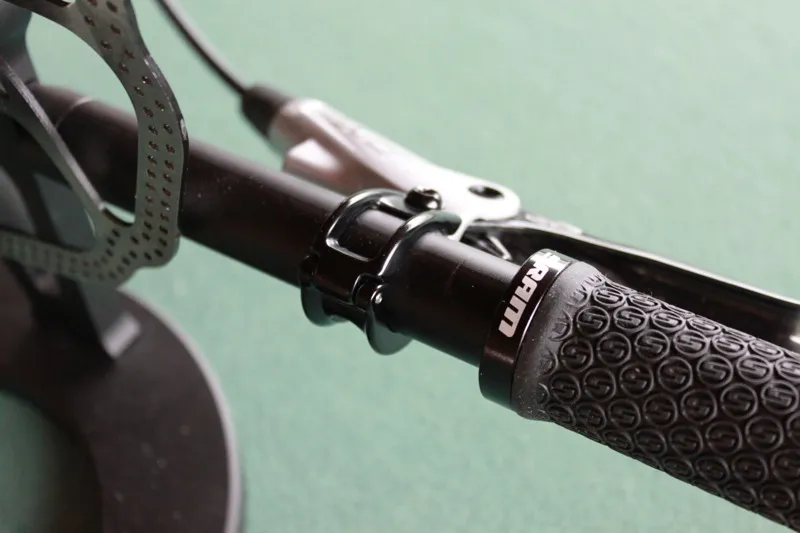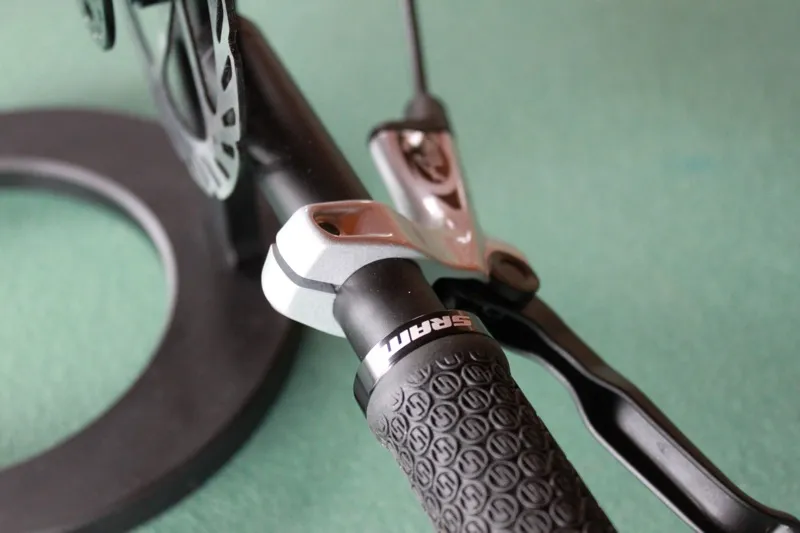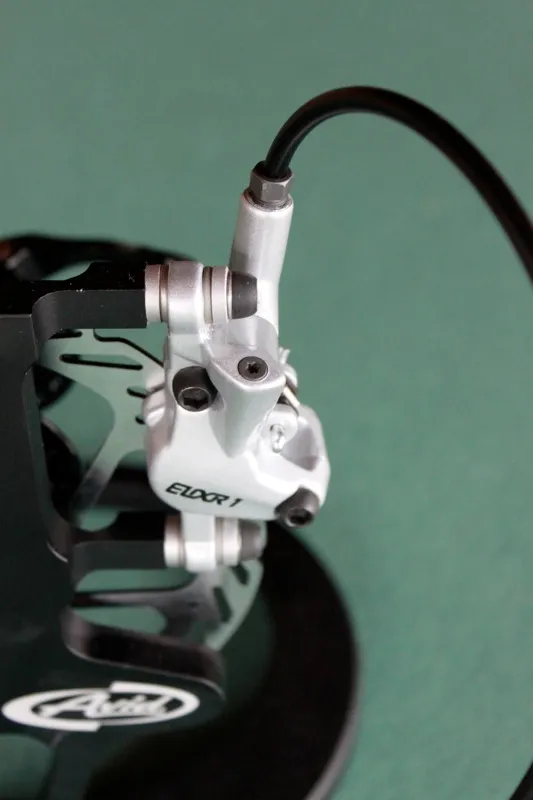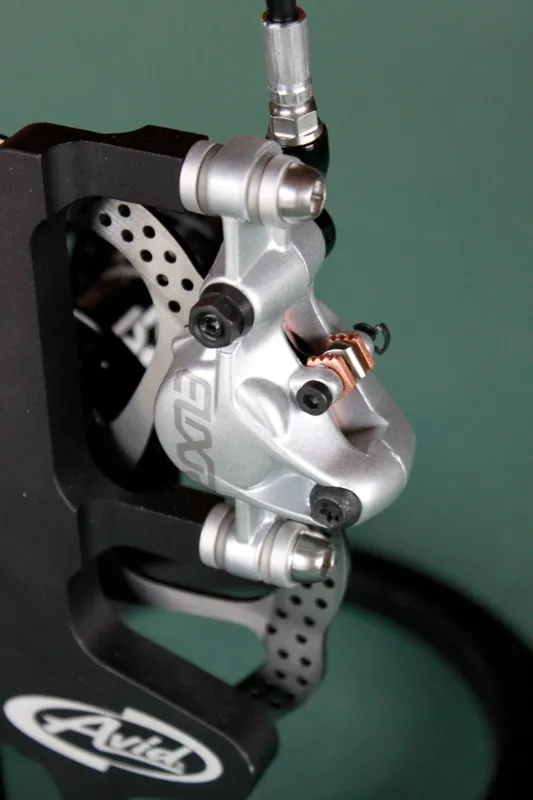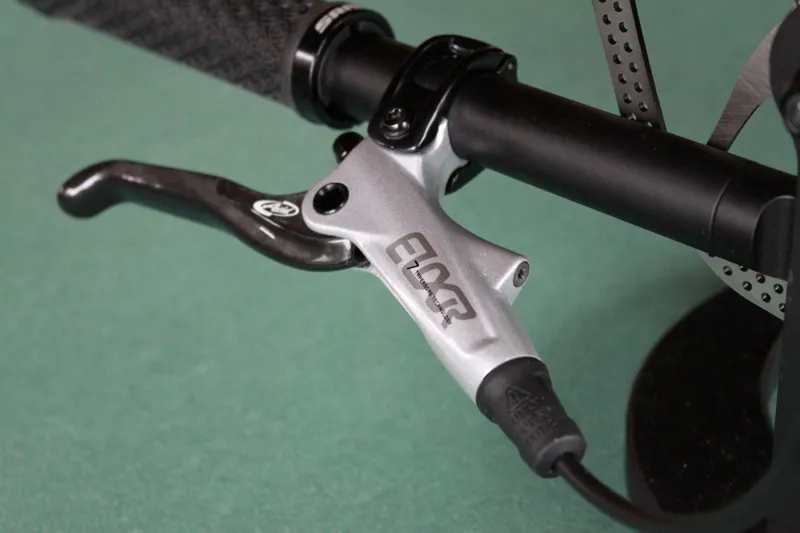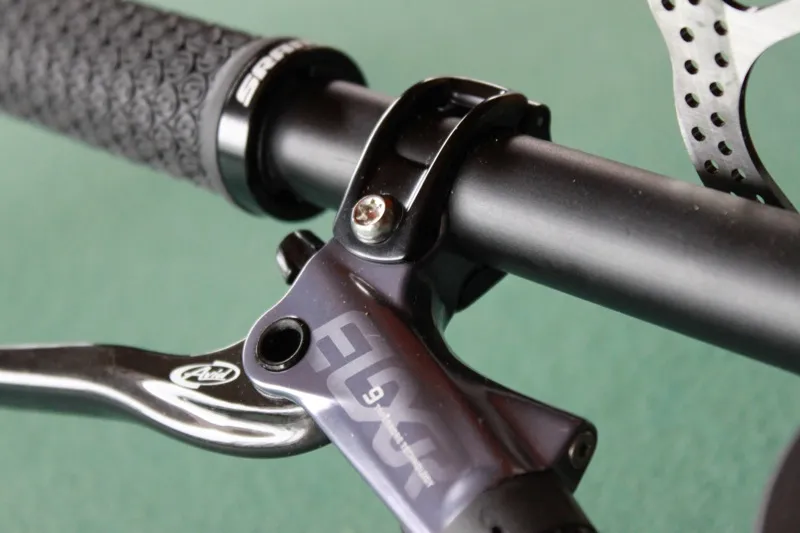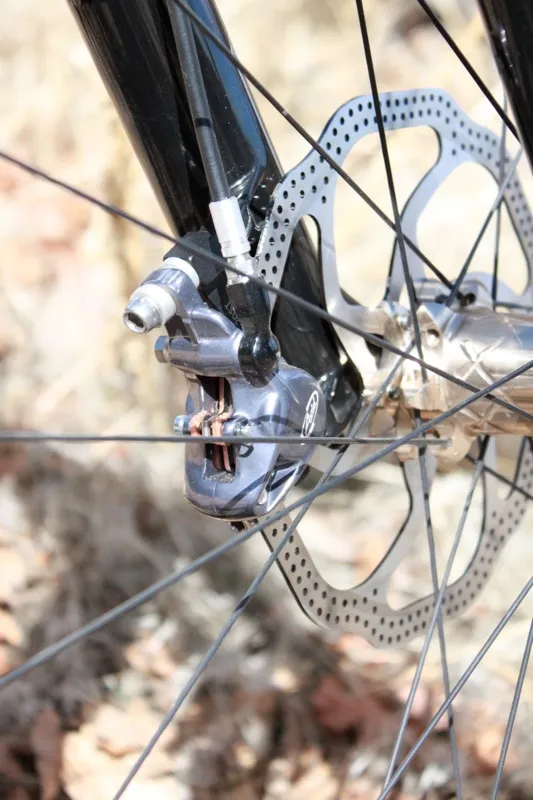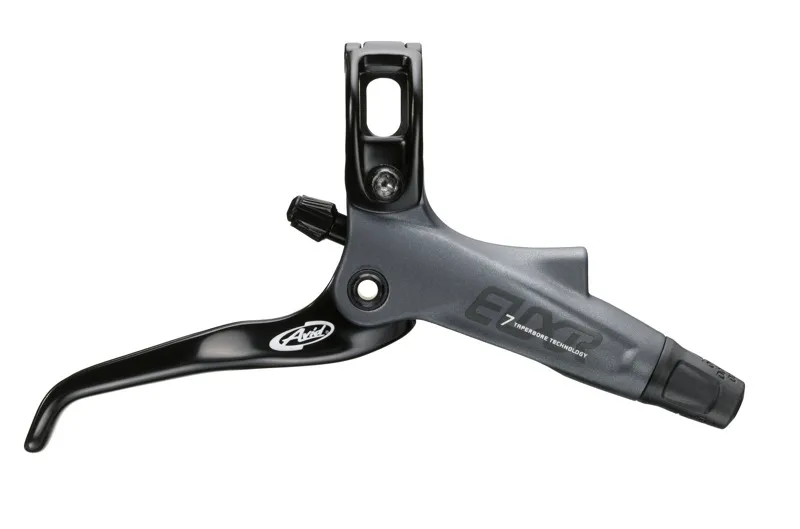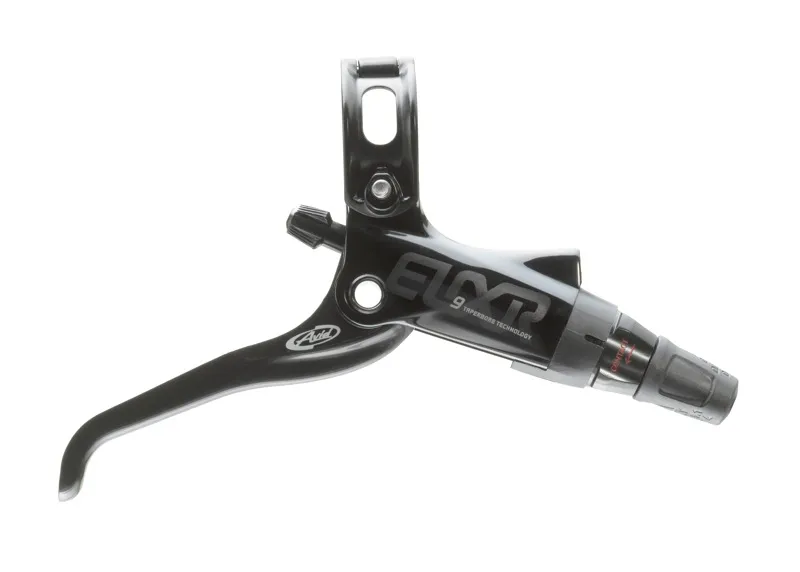For 2012, Avid have have completely reworked their TaperBore hydraulic disc brake design in order to address issues with inconsistent performance. The changes grace the new Elixir 7 and Elixir 9 model brakes, which will be available late spring 2011.
The new Elixir 7 and 9 replace the current Elixir CR and Elixir R models. There are two major changes: a master cylinder update that promises better bleed consistency and air management; and an overhaul of the entire Avid line’s rotor sizing options to 20mm increments: 140 (rear), 160, 180 and 200mm.
Other features include tool-free and detented reach adjust, detented pad contact adjustment (Elixir 9), a hollow main pivot, increased fluid volume, a four baffle bladder (up from three) made from new material, additional caliper machining and refined finishes.
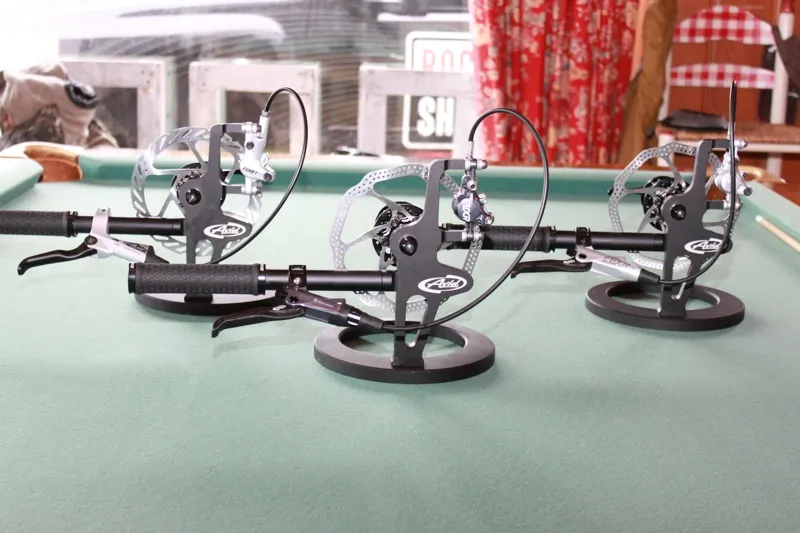
Avid's Elixir 1, 9 and 7 brakes
TaperBore refresher, updates
Just about every other handlebar actuated hydraulic disc brake on the market, whether it's designed for pedal or motor sport, uses the almost half-century-old ‘timing-port’ design for its master cylinder. Here, when you pull the lever, hydraulic pressure pushes a piston past a porthole in the side of the cylinder wall to close the system and build pressure, which pushes in the brake pads.
On Avid's TaperBore design, on the other hand, a large (in bicycle terms) piston is pushed into a tapered bore to close the system. This is said to offer two main benefits. First, it pushes more fluid than is possible with a timing port and offers better fluid control when engaged, which potentially improves heat capacity, power and modulation. Second, its seals are subject to less wear because they’re not dragged over a port (which acts like a grater).
The main issue with Avid's original system, which prompted their major TaperBore cylinder redesign, was its propensity to trap air during the bleeding process, which led to the design's inconsistent reputation. There's common agreement that, when bled expertly, the TaperBore brakes provide excellent — even benchmark — power and modulation. The new internals should reduce the need for ‘expert’ bleeds.
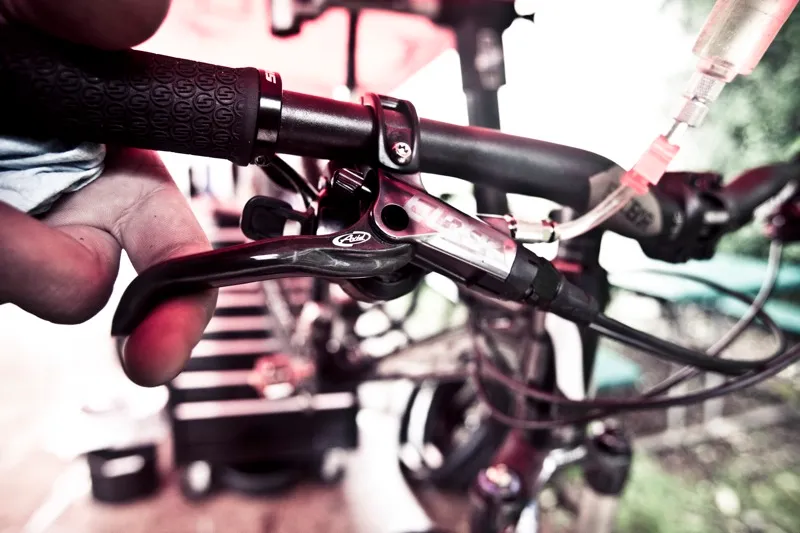
The new internal design of the TaperBore mechanism aims to meet the goals of better bleed consistency and air management
To further address the issue, Avid have reconfigured their production bleed process and facilities. “The downside of the current design is that if you have a bad bleed or air in the system you can also move air into the system really well,” said Paul Kantor, SRAM’s category manager for brake systems and mountain bike wheels. “That was a challenge for us; we fell down a bit in terms of our consistency of the bleed from our factory. It was a bit of a black eye.
"As of a year ago, we stopped production for a couple of weeks over Chinese New Year and we rebuilt every one of our bleed machines. It takes six to seven months to rebuild all of those machines; we’ve done that now. We've completely refined our measurement methods as to how we detect good or bad bleeds and the new machines mimic [our hand bleeding process].”
Aside from the tool-free reach adjuster, the first thing most users will notice on the new brakes is the body-mounted bleed port; the first generation brakes from XX down to Elixir CR sported a port mounted on the pad contact adjuster dial. The new bleed location eliminates the need for a secondary internal seal. The new single seal is larger and, according to Kantor, "drastically improves" the brake’s air permeability both through design and a new bladder material.
Additionally, the design uses a delrin ‘air track’, which is basically a spacer that controls fluid — and air, should there be contamination — flow, and a low fluid communication port, preventing trapped air from entering the system (ie. brake line) and affecting its performance. “The ‘air trap feature’ allows us to have some air in the system and have it live inside the reservoir without introducing it into the nose of the lever {thus negating its effect on performance],” said Kantor.
“Because it’s at the bottom of the lever, the air is naturally going to sit in suspension at the top of the fluid and it’s going to be really hard to get it to work its way down to the bottom of the lever, particularly when you’re riding.” Kantor explained that the old Elixir’s performance degraded when 10mm of air (the measured amount of air drawn out during a specific Avid bleed test) was introduced into the system. The new brake has a 100 percent greater resistance to air, so its performance isn’t affected until 20mm of air enters the system.
Rotor refinement, size and shape
Gone are 185mm and 203mm rotors, which brings Avid in line with more of the industry and dramatically drops the number of adaptors needed to fit the brakes to bikes to just two spacers – and lighter spacers at that. The 20mm (200mm) post mount adaptor saves a claimed 20g from the previous 203mm adaptor.
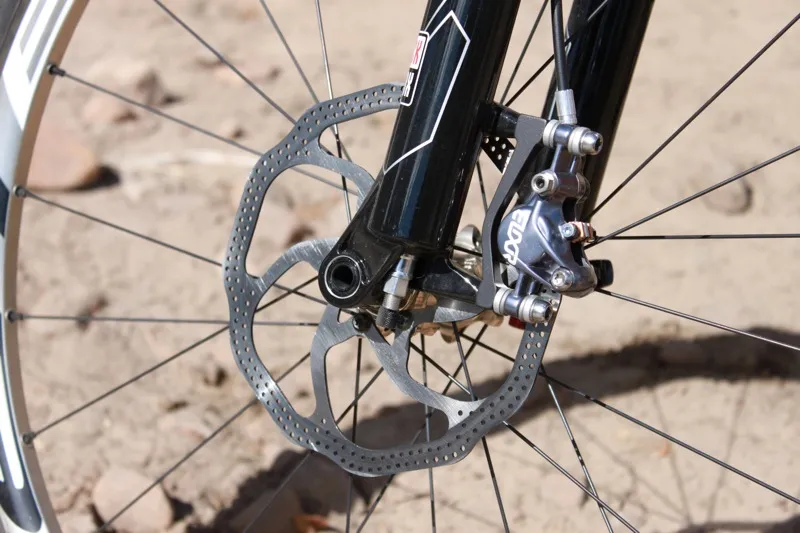
The new 180mm HS1 rotor and 13g, 10mm, post mount caliper spacer
“The interesting thing with our rotors is that we don’t do any industrial design," said Kantor. "They’re all engineering driven and the shape comes from the engineering requirements. Either people like the way they look or they don’t; we focus strictly on how it’s going to perform.”
To address any concerns of power loss due to the rotor size change, Avid have adjusted the leverage ratio of the brake lever to compensate for the slightly smaller rotor size above 160mm. Old brake systems will retrofit to the new rotor sizes via adaptors, and Avid will stock replacement parts for the old sized rotors for a number of years, “not to leave anyone hanging,” according to Kantor.
Avid have ditched the slots of the old G2 rotors in favor of holes in the brake track of the newly sized HS series rotors to eliminate their dreaded ‘turkey gobble’ screeching and sensation felt through the lever during slow to medium power use, as well as further reduce their weight.
The new rotors come in HS1 (one-piece stainless with IS mounting), HSX (two-piece rotor with alloy carrier) and HSXCL (Center Lock variant of the two-piece rotor) versions. Furthermore, all of the rotors lose substantial weight; for example, the HS1 in 160mm weighs just 93g, down from the previous G3 model’s 102g (claimed weights).
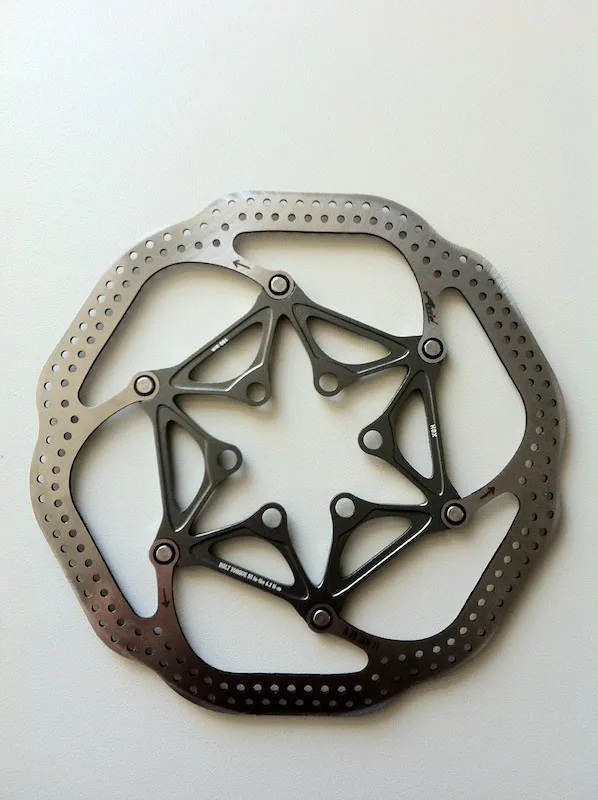
The new HSX two-piece rotor will be available in six-bolt and Center Lock styles
New brakes, old price
While it looks as though the entire Avid brake line will be refurbished for 2012, Kantor only gave us details of the Elixir 9 and 7, as well as the new entry-level Elixir 1. None of these brakes will cost substantially more than the model it replaces.
Elixir 9 weighs 253g and 266g (respectively, front and rear 160mm configuration) and costs US$215 per wheel. 160mm rotors add another 94g per wheel, while the 180mm rotor weighs 126g and the required 10mm adaptor weighs just 13g.
The brake features a new forged aluminum lever body and two-piece caliper, both with the option of a storm grey or black anodized finish. The retail version comes with a carbon lever blade but an aluminum option will be available to OE manufacturers. The new Elixir 9 is MatchMakerX, XLoc and Reverb remote compatible. The Elixir 9 is finished with stainless steel hardware.
Elixir 7 is slightly lighter — by roughly 3g per wheel — due to the absence of a pad contact adjustment at 250g and 263g (front and rear) and costs $179 per wheel. It features the new tool-free reach adjuster, new body and two-piece caliper, which are painted, either silver or storm grey, rather than anodized. The retail model comes with a carbon lever blade, but an OE version will be available with an alloy lever. Elixir 7, like 9, is compatible with all of SRAM’s new MatchMaker X remote attachments. Elixir 7 is finished with hardened steel hardware.
Elixir 1 brings Avid’s TaperBore technology to the new, lower entry-level price of $89. The brake comes with the old-style G2 rotors, but in the new 20mm increment size options. Kantor said that, despite the seeming budget nature of the model, Avid’s most senior engineer was in charge of the project due to the difficulty of packaging TaperBore into a brake with such a low price.
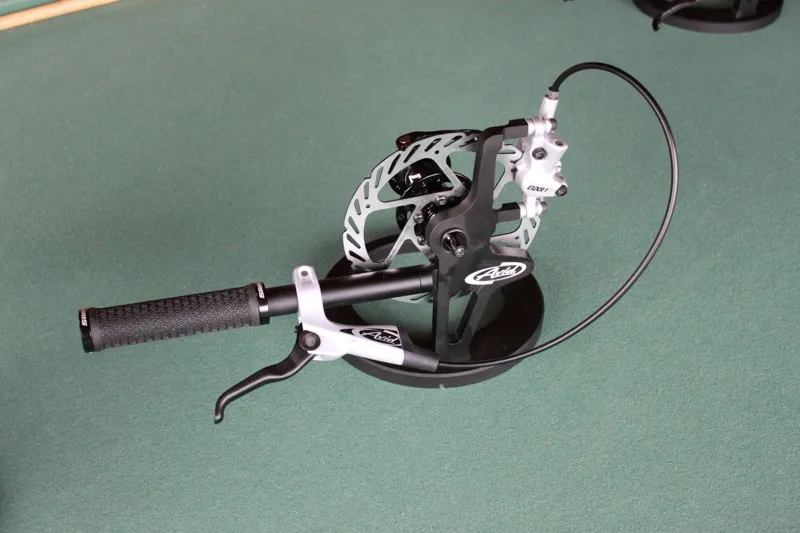
Avid's entry level TaperBore brake, Elixir 1
All three new brakes will be available April 2011 and Avid hinted they would reveal more 2012 information later this spring. In the meantime, look for Elixir 7 and 9 reviews on BikeRadar later this week.
